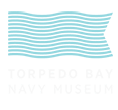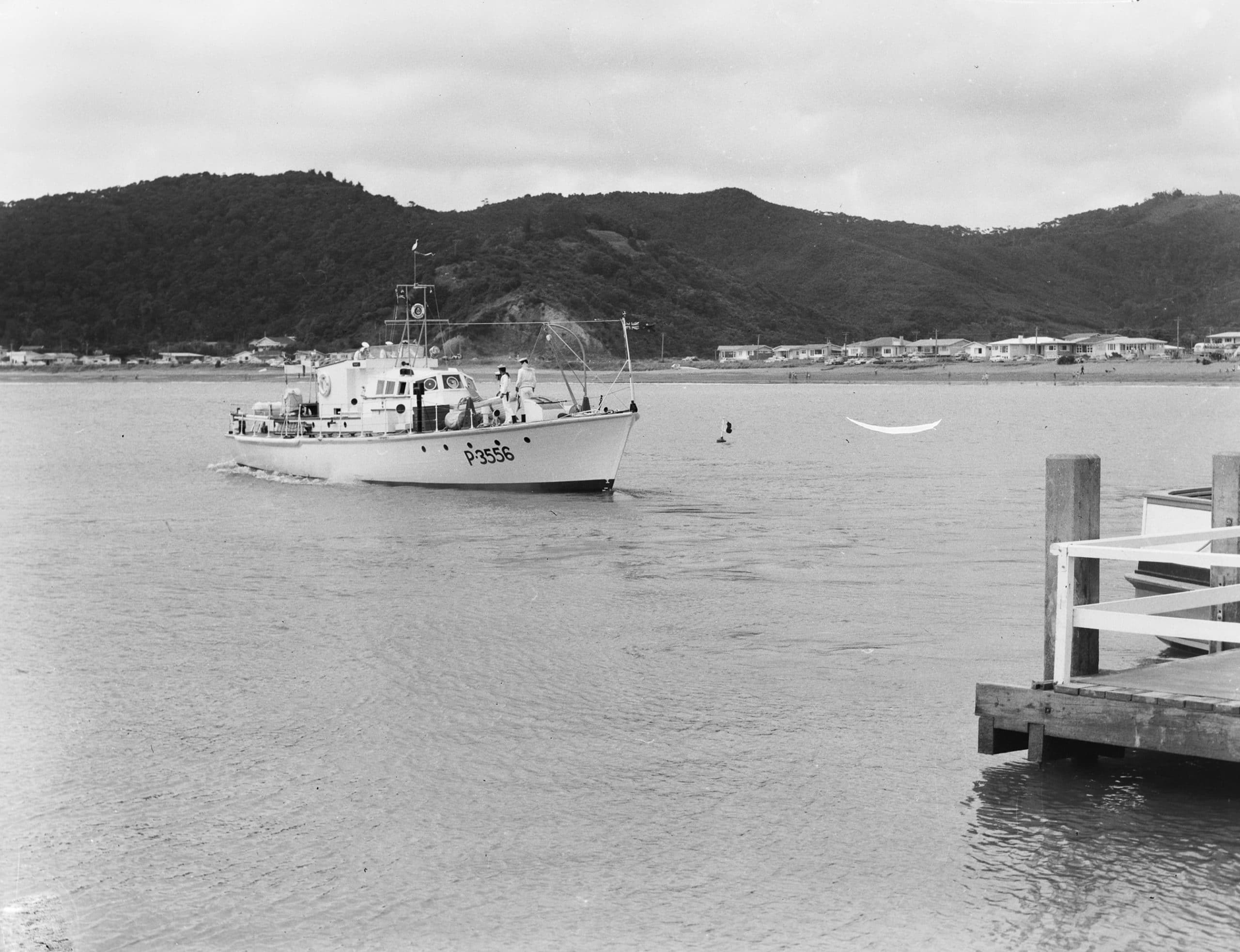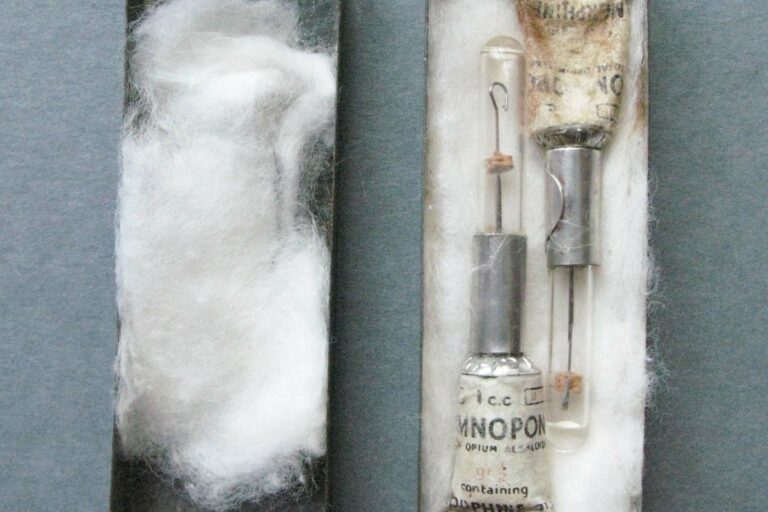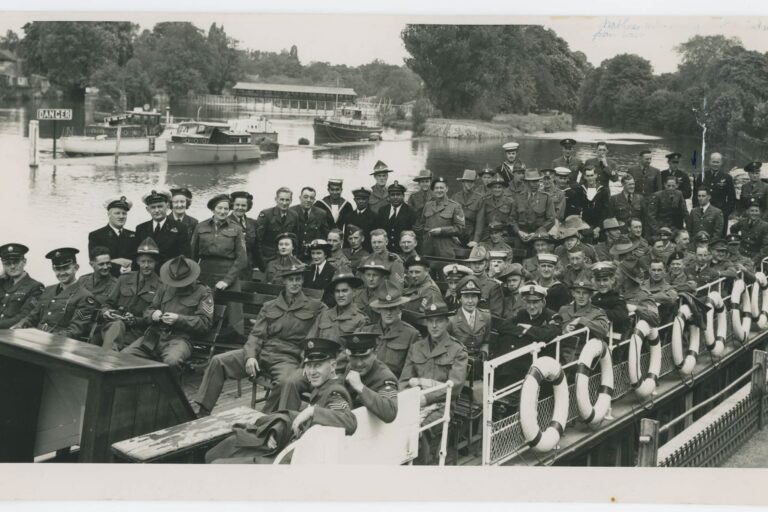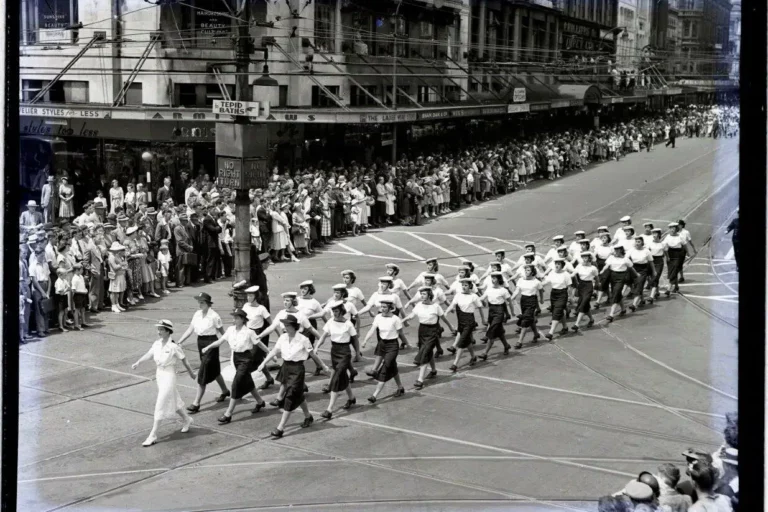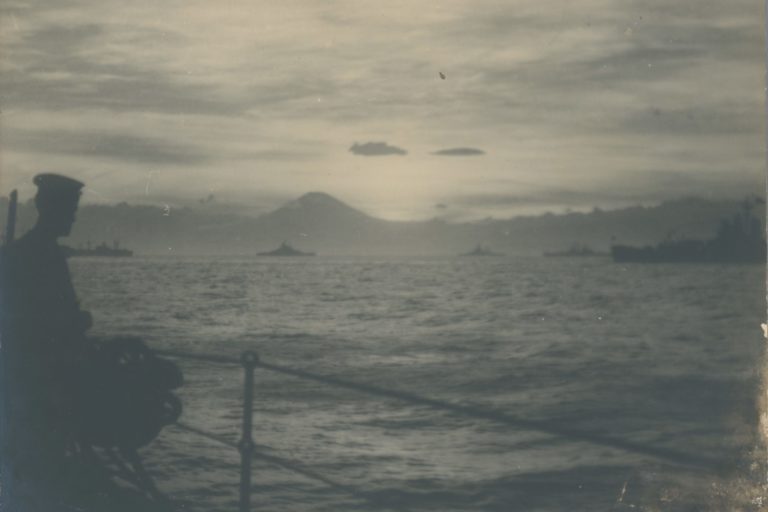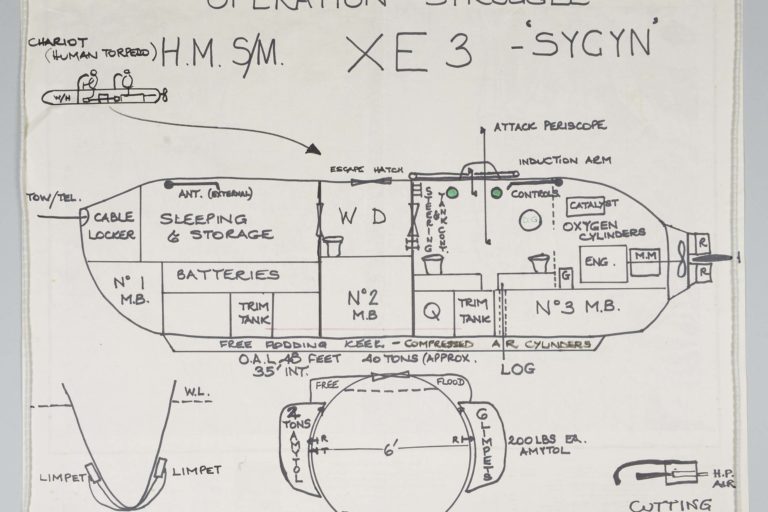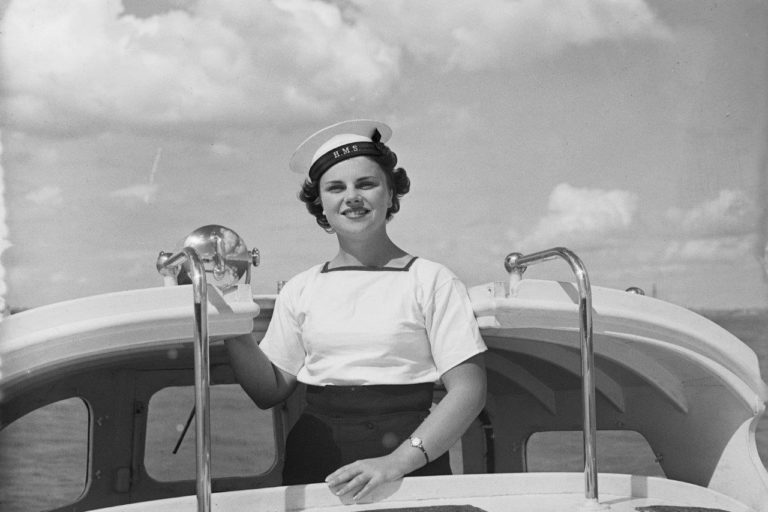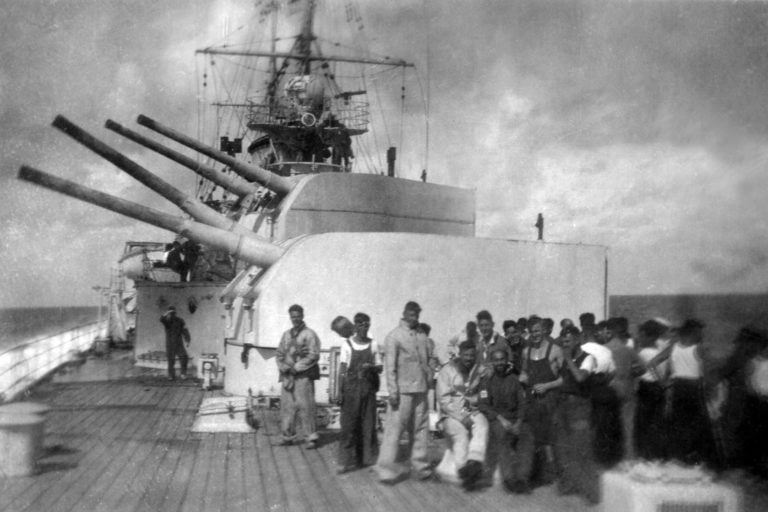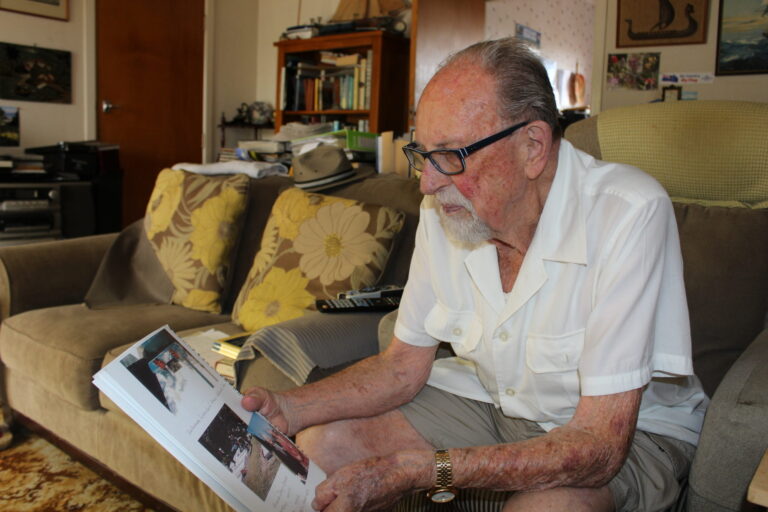Harbour Defence Motor Launches (HDMLs) were designed in 1939 by the Admiralty for harbour patrol and anti-submarine duties. In 1948 the Admiralty reclassed HDMLs as Seaward Defence Motor Launches. Q1187 was renamed Tarapunga and Q1188 was renamed Takapu.
Ship details:
Type: Hydrographic Survey Launch
Displacement: 54 tonnes
Dimensions: 22 x 21.3 x 4.8 x 1.6m
Machinery: 2 x shaft Grey diesels bhp 330 = 10-12 knots
Armament:
1 twin mounted .50 water-cooled Browning machineguns
1 x 20mm Oerlikon
2 x twin mounted .303 Vickers machineguns
8 x depth charges
ASDIC
Complement: 10 officers and ratings
Builder: Everett Marine Ways Inc near Seattle, Washington, United States – ordered 21 February 1942, completed January 1943
Key Dates:
Commissioned 13 May 1943 as Q1187 [Tarapunga]
Commissioned 22 May 1943 as Q1188 [Takapu]
Paid off 19 September 1945 [Tarapunga] sold privately but returned in 1950 to the RNZN
Pennant No.: Q1187 as SDML
Q1188 as SDML
AS Seaward Defence Motor Launches:
Ship details as above
Armament: Removed in 1945
Survey Equipment: Fitted to Q1188 when rebuilt 1946-50
Fitted to Q1187 when converted in 1950-51
Pennant No.: P3566 Tarapunga [formerly Q1187]
P3556 Takapu [formerly Q1188]
Renamed: Tarapunga as Mako 1980
Takapu as Kahawai 1980
Colour Schemes – in wartime service the HDMLs had a mixture of dark and light grey overall. Post 1945 this was changed to a light grey. The Survey Motor Launches [SML] were given an all white scheme as was standard for survey vessels in this period as per the images above.
Ship History:
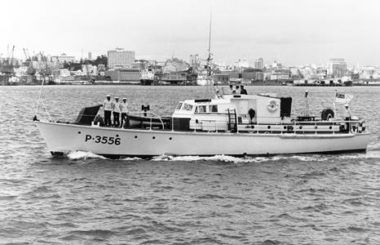
HMNZS Takapu [RNZN Museum]
It was intended that they would be used for anti-submarine patrols in the port approaches. They would replace the NAPS launches. Q1187 after commissioning joined the 124th Motor Launch Flotilla in Auckland. Q1188 joined the 125th Motor Launch Flotilla based in Wellington. They then carried out routine patrols in their respective areas through to 1945. As the war came to an end in 1945 the launches were concentrated at Auckland to pay off. Q1187 arrived on 30 June 1945 followed by Q1188 on 11 July. After paying off they were laid up at Pine Island. In July 1946 ownership passed to the Marine Department who was selling off war surplus. Once the Lend-Lease agreements were concluded the government put them up for sale. However, during the sale process the government realised the value and in February 1947 Q1188 was withdrawn from sale.
In 1949 the RNZN purchased the frigate Lachlan for use as the first survey vessel in RNZN commission. It was decided that two smaller vessels would be needed to assist her in the survey task which HDMLs would be suitable. Q1188 had been cannibalised for parts to keep the other HDMLs that were in service so she had to be rebuilt. This was completed in February 1950 and she was commissioned as SML 1188 and was sent to Wellington in March. After arriving in Wellington, she began a survey of Cook Strait. In April she was given the pennant number P3556. A second launch was required for survey duty so that Auckland Coastguard’s Cutter No. 1, formerly Q1187 reverted to the RNZN on 29 May 1950 and was given the pennant number P3566 in October 1950. She was converted to SML in March 1951 and commissioned as a survey vessel on 21 March 1951. In April she proceeded to Wellington to carry out surveys of the Cook Strait. From then until 1979 both vessels carried out surveys right across the New Zealand coastline mostly by themselves or as a pair. They would also work with HMNZS Lachlan & Monowai.
In 1948 the Admiralty reclassed HDMLs as Seaward Defence Motor Launches [SDMLs]. The RNZN changed the classification in August 1949. By March 1950 orders were issued to change the pennant numbers. Q1187 was assigned the number P3566 and Q1188 assigned P3556. This caused some confusion in signalling and the keeping of records. There is still today some uncertainty about which vessel is being referred to due to errors in recording the correct number. To try ad solve the problem for the signallers from May 1951 P3556 had [A] added and P3566 [B]. These were added to the hulls in 1953. On 28 October 1954 P3556A chased a stolen yacht off Whangaparaoa.
![HMNZS Tarapunga [RNZN Museum]](https://navymuseum.co.nz/wp-content/uploads/tarapunga-380x256.jpg)
HMNZS Tarapunga [RNZN Museum]
Other SDMLs were used as survey vessels. Between 1955 and 1957 P3562 [HMNZS Olphert then Parore] surveyed Ketu Bay and the outer Pelorus Sound. In February 1975 HMNZS Paea [P3552, then Philomel then Paea] assisted Takapu & Tarapunga after Lachlan was withdrawn from service. This deployment carried on through to March 1977 when the arrival of the new survey ship HMNZS Monowai was approaching. For this duty, Paea was repainted white after the first survey season. In late 1977 she was transferred back to RNZNVR duties and repainted back to the standard scheme. In March-April 1978 Paea surveyed the Tory Channel
At the end of the 1978-1979 survey season Tarapunga was withdrawn from service and paid off in June 1979. In November 1979 Takapu arrived at Auckland for paying off and was decommissioned in December. At this time the IPC vessels marked for survey duty were under construction at Whangarei and had been assigned the names Takapu & Tarapunga. Both SDMLs were repainted to the standard colour scheme and refitted for use by the RNZNVR. Takapu was renamed Kahawai II and was sent to HMNZS Toroa in August 1980. Tarapunga was renamed Mako II and sent to HMNZS Olphert in November 1980. In August 1982 Kahawai II left Otago and was dismantled for disposal. Mako II left Wellington in August 1983 for dismantling. Both vessels were sold by the RNZN in 1984 ending some 40 years of service with the RNZN which was well beyond their expected life in 1943.
The Second Takapu & Tarapunga[1]
Ship details
Type: Inshore Patrol Craft – Survey Vessel
Displacement: 112 tonnes
Dimensions: 26.8 x 24.4 x 6.1 x 2.3m
Machinery: 2-shaft Cummins marine diesels twin shaft bhp 730 = 12 knots
Armament: Not armed in survey commission – could take 1 x .50cal MG
Range: 1850km @ 12 knots
Complement: 18 officers and ratings, usually two officers and nine ratings
Builder: Whangarei Engineering and Construction [WECO]
Key dates:
Launched
19 November 1979 Tarapunga
15 June 1980 Takapu
Taken Over
23 March 1980 Tarapunga
30 June 1980 Takapu
Began RNZN service
9 April 1980 Tarapunga
8 July 1980 Takapu
Both ships were decommissioned in 2000
Pennant No.: A08 Tarapunga
A07 Takapu
Service History:
![HMNZS Tarapunga IPV [RNZN Museum]](https://navymuseum.co.nz/wp-content/uploads/tarapungaIPV-378x280.jpg)
HMNZS Tarapunga IPV [RNZN Museum]
The survey equipment fitted included:
- Zodiac dinghy
- Radar
- Gyro compass
- Speed log
- Echo sounders ranged to 1400m
- Position fixing system accurate to +/- 3m at 80km
- GPS
- Weather map fax
Tarapunga arrived for service with the RNZN on 30 March 1980 from Whangarei. Takapu arrived on 2 July 1980. In August she returned to Whangarei for adjustments. They could work together on surveys or alone. They could also work in company with either Monowai or Resolution. The first major task was carried out from 1981 to 1984 when they carried out a survey of Foveaux Strait and Bluff Harbour. This was updating a survey last carried out by HMNZS Lachlan as reported by the Ministry of Defence in 1984.
![HMNZS Takapu IPV [RNZN Museum]](https://navymuseum.co.nz/wp-content/uploads/takapuIPV-380x262.jpg)
HMNZS Takapu IPV [RNZN Museum]
Both ships were also deployed for exercises with the inshore patrol craft. In November 1985 both ships were returned to Whanganui for engineroom modification to cut down on engine noise. On 4 November 1980 Tarapunga was holed in two places when she struck a spar in the remains of the sailing ship Northumberland[3] in Bay View Beach Westshore, Napier. She made to the Napier port and then returned to Auckland escorted by Takapu.
They also carried out surveys across New Zealand from 1984 onwards. They operated with Monowai until she was decommissioned. They also carried out work with HMNZS Resolution but by 1999 they were too expensive to keep running and were decommissioned in 2000.
[1] [1] R.J. McDougall, New Zealand Naval Vessels, Christchurch: GP Books, 1989, pp. 121-122.
[2] Extract from the report of the Naval Board of the Defence Council period 1 April 1983 to 31 March 1984, paragraph 74.
[3] Wrecked 1887.

